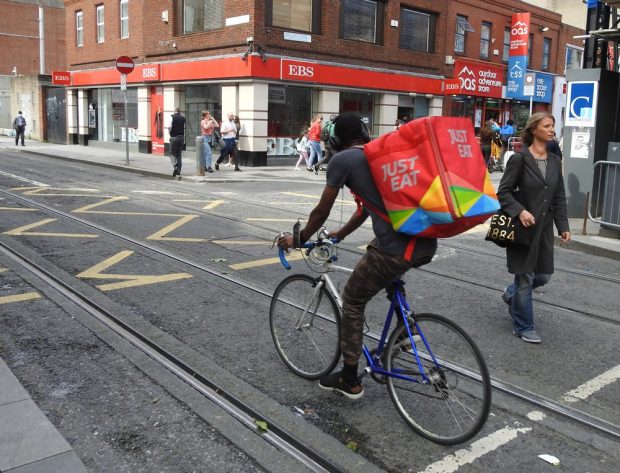Just Eat’s 14% Drop in Orders Suggests Inflation Taking Toll on Delivery

Just Eat Takeaway.com’s declining orders suggest consumers are making more conservative choices about food spending.
The multinational restaurant delivery aggregator saw orders fall by 14% year over year in the first quarter of 2023, from 263 million to 228 million, the company reported in a presentation shared with analysts Wednesday (Apr. 19).
The delivery service attributes much of this decline to the continued impact of the pandemic, with CEO Jitse Groen arguing on the company’s earnings call that “cost of living is difficult for us to assess” because the aggregator “can’t really measure that impact,” pointing to continued lockdowns in continental Europe throughout the year.
However, in North America, where lockdowns have not been a major issue in the last year or so, order volume still fell 18% from 90 million to 74 million, suggesting that there are more factors than just the virus.
“What [inflation] does for orders, we don’t quite know,” Groen said. “It’s very difficult to separate [ongoing] COVID effects from what inflation does. We can only see that the ATV [average transaction value] trends up.”
Certainly, in the United States at least, consumers note that they are shifting to less expensive ordering channels in the face of rising prices. Data from PYMNTS’ February study “Connected Dining: Rising Costs Push Consumers Toward Pickup,” for which we surveyed a census-balanced panel of more than 2,100 United States consumers in January, revealed that nearly half of all consumers (48%) have been more likely to pick their restaurant orders up themselves rather than have them delivered due to inflation.
Overall, delivery services have been having a rough go of it in this inflationary environment. Just Eat Takeaway.com, for its part, has been cutting thousands of driver jobs in its United Kingdom business, it was reported last month, as part of a move to return to a gig worker model where drivers are self-employed contractors.
Additionally, Just Eat U.K. rival Deliveroo announced in February that it was laying off 9% of its global workforce due to economic challenges, with approximately 350 expected to be affected. CEO Will Shu added that the company expects the final tally to be closer to 300 once it accounts for redeployments.
Last week, it was revealed that Sydney, Australia-based 10-minute grocery delivery service MilkRun is shutting down, and days earlier, it was reported that DoorDash’s DashMart dark store rapid delivery arm shut down in Australia about four months after its launch in the country.
Groen believes that the increases in the aggregator’s order values are lower than inflation across the company, noting restaurants’ efforts to absorb price increases.
“What happens is that prices go up and then the prices are changed by the restaurants, not the other way around,” Groen said, “and therefore the inflation and the influence it has on menu prices is probably less compared to the actual inflation in the market.”
Yet this may not be true in all areas as inflation continues. In the United States, for instance, this trend held for a long time, with restaurant inflation significantly lower than grocery. However, in March, restaurant price increases surpassed grocery, 8.8% versus 8.4%, respectively, per the latest data on record from the U.S. Bureau of Labor Statistics (BLS). This inflation was far higher than the all-item rate of 5%.

